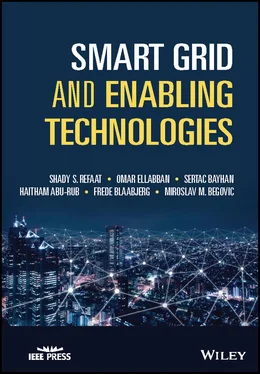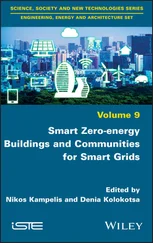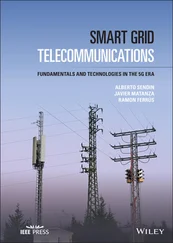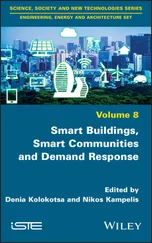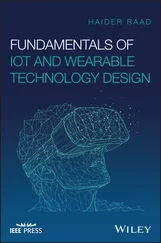Frede Blaabjerg - Smart Grid and Enabling Technologies
Здесь есть возможность читать онлайн «Frede Blaabjerg - Smart Grid and Enabling Technologies» — ознакомительный отрывок электронной книги совершенно бесплатно, а после прочтения отрывка купить полную версию. В некоторых случаях можно слушать аудио, скачать через торрент в формате fb2 и присутствует краткое содержание. Жанр: unrecognised, на английском языке. Описание произведения, (предисловие) а так же отзывы посетителей доступны на портале библиотеки ЛибКат.
- Название:Smart Grid and Enabling Technologies
- Автор:
- Жанр:
- Год:неизвестен
- ISBN:нет данных
- Рейтинг книги:3 / 5. Голосов: 1
-
Избранное:Добавить в избранное
- Отзывы:
-
Ваша оценка:
- 60
- 1
- 2
- 3
- 4
- 5
Smart Grid and Enabling Technologies: краткое содержание, описание и аннотация
Предлагаем к чтению аннотацию, описание, краткое содержание или предисловие (зависит от того, что написал сам автор книги «Smart Grid and Enabling Technologies»). Если вы не нашли необходимую информацию о книге — напишите в комментариях, мы постараемся отыскать её.
Smart Grid and Enabling Technologies
Smart Grid and Enabling Technologies
Smart Grid and Enabling Technologies — читать онлайн ознакомительный отрывок
Ниже представлен текст книги, разбитый по страницам. Система сохранения места последней прочитанной страницы, позволяет с удобством читать онлайн бесплатно книгу «Smart Grid and Enabling Technologies», без необходимости каждый раз заново искать на чём Вы остановились. Поставьте закладку, и сможете в любой момент перейти на страницу, на которой закончили чтение.
Интервал:
Закладка:
The benefits that could be obtained from adopting the SG are divided into two types, direct benefits, and indirect benefits. Direct benefits include the following:

Figure 1.22 SG role in the electricity power sector.
Enabling active participation of consumers, which transforms the centralized grid control to less centralized and more consumer interactive based.
Improving energy system resiliency, flexibility, and load management.
Increasing operating efficiency.
Reducing transmission and distribution losses.
Anticipating and responding to system disturbances (achieving self‐healing and resilient system).
Providing power quality for the digital economy.
Allowing for a high level of renewable energy penetration.
Accommodating the needs for a high level of EV integration.
Indirect benefits of the SG include the reduction of the overall expenses by reducing both long‐term capital expense and operating expense. As demand increases, utilities must provide the required power to meet the peak loads which results in extremely high‐cost infrastructure. Smart management of energy supply and demand will help reduce the need to build more power plants in addition avoiding oversize of transmission and distribution infrastructures which, in turn, decreases the long‐term capital cost. In addition, SG adaptation enables the utility to reduce power outages, decrease the risk of premature failure and, in turn, increase resiliency of the overall grid. Furthermore, new economic growth and job creation are important indirect benefits of the SG.
1.12 Smart Grid Challenges
The power system is migrating from the conventional grid to the SG which faces many obstacles and challenges. With all‐new energy resources, smart devices, and entities, the complexity of the system will significantly increase. Optimal design, operation and handling of such systems will become more challenging, even with the availability of new technologies and tools. Chapter 18identifies the most important challenges facing the development of the SG. Here we briefly touch upon specific points as the main challenges facing the transformation to the SG energy paradigm.
1.12.1 Accessibility and Acceptability
Customers' acceptability, privacy, costs, cybersecurity, and regulatory considerations possess a substantial influence on the advancement of SGs. Undeniably, customers play a vital part in SG expansion: they are needed to transform their part as customers from passive to active, having full knowledge of their consumption, and capable of managing it depending on the availability of energy which is considered a challenge [76]. The SG technology should be accessed, accepted, and adopted by various grid operators and end‐users. Success of this transformation depends on all levels of acceptance, without exception.
1.12.2 Accountability
Accountability is essential to enhance the security of the SG including privacy, integrity, and confidentiality. Accountability refers to a system that is recordable and traceable, consequently, including various parties responsible for those communication principles for its actions. Accountability logic is considered as an essential process to examine the accountability of a secure system [77]. All grid players hold responsibility for its success and utilization, but also include various levels of accountability. This should be identified and made clear to all grid players.
1.12.3 Controllability
SG technologies contain a large number of different controllable elements, systems, and subsystems which require coordination and proper management. As an example, DERs are connected to the grid directly or through a power electronic interface. The voltage source inverter (VSI) is connected to the grid as an interface to support the suitable modification of the grid voltage and frequency [61]. The entire grid is becoming more power electronics dominated with very low inertia. Controllability of such a system becomes a major challenge for stable and efficient operators.
1.12.4 Interoperability
The IEEE definition for interoperability is “the ability of two or more systems or components to exchange information and to use the information that has been exchanged” [78]. The SG is an interoperable system that should be capable of exchanging meaningful, actionable information, addressing safe, secure, efficient, and reliable operations of power systems. The systems will distribute a pre‐defined purpose of the exchanged information, and this information can expect suitable types of responses. The reliability, fidelity, and security of information exchanges among SG subsystems and components should achieve required performance levels [79]. The GWAC (Grid Wise Architecture Council) [80] has looked at, interoperability between components of the same system, or between different systems and suggests several implications to be derived;
1 The infrastructure should permit exchange of data and its transfer from senders to receivers; thus, network connectivity should be assured.
2 The implementations of the participating solutions should be able to make sense of the data given. Therefore, common symbols, protocols, and implementation‐specific interpretations thereof are required.
In the context of the SG, interoperability includes seamless, end‐to‐end connectivity of hardware and software from end‐use devices to the power source, improving the coordination of energy flows with real‐time information and analysis. Interoperability is an essential part of the success of SGs. According to the National Institute of Standards and Technology (NIST) [81] “Once appropriate levels of interoperability are achieved, policymakers, investors, engineers, and other stakeholders can turn their attention to solving a broad set of challenges: improving the efficiency of power delivery, transitioning to cleaner energy sources, and enabling new markets that surround electricity delivery.” The NIST‐coordinated interoperability effort is organized to include a wide set of stakeholders among the industry, and it is examining the purpose of standards across a wide range of SG interoperability areas [79].
1.12.5 Interchangeability
Interchangeability defines the process of two or more components interchanged by joint replacement without affecting system performance [82]. Interchangeability needs devices to aid in the present functional behavior on their communication interfaces or permit alterations in functionality to be reinforced by the corresponding communication protocol [83]. Thus, interchangeability deals with additional requirements with regard to the functional behavior of devices at their communication interfaces.
1.12.6 Maintainability
Itis essential to ensure the grid's ability to maintain reliable operation and undergo timely modifications and repairs to ensure high‐quality power regardless of external factors variations [84]. The SG sub‐systems and components should be able to perform their functions for the pre‐defined period of time. Maintainability is an essential part of SG reliability.
1.12.7 Optimality
SG is characterized with the variations in power sources that are produced from conventional and various renewable sources. Also, the load capability for peak demand decreases will the increase of power network complexity. This requires highly distributed and optimal schemes and elements that ensure the grid's reliability and economic operation. Economic, size, and technical optimality should be ensured at the generation and demand sides [85]. Optimal placement and sizing of the distributed generations, charging stations, system modularizing, measurement systems, etc. are essential for creating SG energy paradigm and its scalability.
Читать дальшеИнтервал:
Закладка:
Похожие книги на «Smart Grid and Enabling Technologies»
Представляем Вашему вниманию похожие книги на «Smart Grid and Enabling Technologies» списком для выбора. Мы отобрали схожую по названию и смыслу литературу в надежде предоставить читателям больше вариантов отыскать новые, интересные, ещё непрочитанные произведения.
Обсуждение, отзывы о книге «Smart Grid and Enabling Technologies» и просто собственные мнения читателей. Оставьте ваши комментарии, напишите, что Вы думаете о произведении, его смысле или главных героях. Укажите что конкретно понравилось, а что нет, и почему Вы так считаете.
